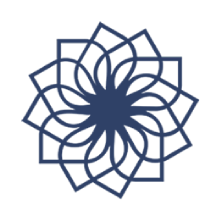The New Geography of Open Access: Who Benefits and Who Pays?

Open Access (OA) has long been celebrated as a transformative movement that would make scientific knowledge accessible to all, regardless of geography or economic status. By removing paywalls for readers, OA promised to democratize scholarship and accelerate global research progress.
Yet, over time, a critical imbalance has emerged: while OA is free to read, it is increasingly expensive to publish. The burden of access has shifted from libraries and readers to authors and institutions, creating a new geography of advantage and exclusion.
This perspective examines how the rise of Article Processing Charges (APCs) has reshaped the global research landscape, empowering some researchers while sidelining others. By analyzing who benefits, who pays, and which solutions hold genuine promise for equity, it asks a central question: Is Open Access fulfilling its mission, or unintentionally reproducing the same inequalities it was created to solve?
Who Benefits from APC-Driven Open Access?
OA has delivered undeniable benefits, particularly for researchers supported by strong funding ecosystems.
Researchers in Wealthy Institutions: Leading universities in North America, Western Europe, and parts of East Asia maintain OA publication budgets or negotiate “transformative agreements” with major publishers. These arrangements allow authors to publish in high-impact OA journals with little personal awareness of the underlying cost. Whether an APC is $2,000 or $10,000, it is absorbed as part of institutional operations.
Funded Research Groups: For research teams supported by national grants or philanthropic organizations, APCs are built into project budgets. Publishing becomes a standard component of scientific output, not a financial barrier.
Countries with National OA Policies: The Netherlands, Germany, Finland, and the United Kingdom exemplify systems where centralized funding supports OA publishing through transformative agreements. These initiatives have enabled large-scale OA growth while ensuring that financial responsibility rests with institutions rather than individual authors.
In these environments, OA functions as originally intended, providing worldwide visibility, enhancing citation potential, and ensuring public access to science.
Who Pays the Price?
While some researchers navigate the APC landscape with institutional support, many others face significant barriers.
Researchers Without Grants: Independent scholars, postgraduate students, and early-career scientists in developing research systems often lack funds for APCs. For them, these fees are not an inconvenience; they are an absolute barrier. As a result, career advancement and academic contribution become linked to financial capacity rather than scientific merit.
Universities in Emerging Regions: Institutions in South Asia, Southeast Asia, Africa, Eastern Europe, and Latin America face difficult choices. Limited research budgets must prioritize laboratories, salaries, and infrastructure. In many cases, a single APC may equal several months’ salary for a researcher.
The Silent Inequality: OA removed access barriers for readers but created new ones for authors. When publication depends on financial capacity, the global record of science risks becoming skewed toward well-funded institutions and countries. Many researchers are left choosing between low-cost, low-quality journals or not publishing at all, a dynamic that widens the global research divide.
Where legitimate publishing becomes financially out of reach, predatory journals exploit the gap. These outlets target authors who must publish for career progression but cannot afford APCs charged by reputable publishers.
Modern predatory journals now mimic professional standards, using AI tools, polished websites, and misleading indexing claims. Their success is not a failure of OA itself but a symptom of an inequitable OA economy that leaves authors vulnerable.
Limitations of Waivers and Discounts
Major publishers often cite waivers or discounts as inclusion mechanisms. However, these programs remain inconsistent:
- Restricted to specific countries
- Limited in annual availability
- Dependent on editorial discretion
- Uncertain for future submissions
This unpredictability forces authors to adjust research or submission strategies based on affordability rather than relevance. Equity thus becomes a matter of eligibility and timing, not principle.
Diamond Open Access: A More Equitable Model
A growing number of initiatives demonstrate that OA can be free for both readers and authors. Diamond Open Access, where journals charge no subscription fees and no APCs, represents a promising framework rooted in community stewardship and infrastructure support.
Successful examples include:
- SciELO (Latin America)
- AJOL (Africa)
- GARUDA and ARJUNA (Indonesia)
- RedALyC and AmeliCA (Global South)
- National repositories and university-led platforms
These models rely on collaboration, shared infrastructure, and public investment rather than author payments. The success of GARUDA, indexing tens of thousands of journals across Indonesia, shows that equitable OA is both feasible and scalable.
Challenges in Indexing and Visibility
Even when journals adopt Diamond OA, achieving global visibility remains difficult. Selective inclusion in Scopus, Web of Science, and PubMed reinforces a second layer of inequality. Journals may be free to publish, but not free to be recognized. Strengthening regional indexing platforms such as Open Science Asia and IndexONE is essential to ensuring that research from emerging regions is visible and valued globally.
What Needs to Change
To fulfill OA’s founding principles, the scholarly community must pursue structural reforms rooted in fairness and sustainability:
- Expand funding for Diamond OA initiatives: National and institutional investment in open infrastructure ensures long-term sustainability.
- Increase transparency in publishing costs: Disclosing real operational expenses prevents inflation and strengthens trust.
- Reform waiver policies: Waivers should be needs-based, transparent, and predictable.
- Strengthen regional indexing networks: Visibility should not depend on commercial indexing monopolies.
- Encourage cooperative publishing models: Shared university and library platforms can reduce costs and raise standards.
Conclusion
Open Access remains one of the most transformative forces in scholarly communication. Its promise of universal access to knowledge is central to scientific progress. Yet, the current APC-driven model risks replacing one barrier with another.
If only those with financial means can publish, the global academic narrative becomes incomplete. Equitable Open Access requires participation, not just availability. Diamond OA, cooperative publishing structures, and investment in open infrastructure offer a path toward a system where every researcher, regardless of geography or funding, can share their work.
OA should serve the global community, not just the parts of it that can afford to pay. Ensuring equity at the point of creation is the only way to fulfill the true promise of Open Access.
Keywords
Open Access Article Processing Charges Scholarly Publishing Diamond OA Research Equity Predatory Journals Academic Publishing Transformative Agreements
Editor’s Brew delivers fresh updates, community highlights, and editorial insights on behalf of ACSE. These posts represent the “daily blend” of news, initiatives, and collective wisdom from across the scholarly publishing community.
View All Posts by Editor's BrewDisclaimer
The views and opinions expressed in this article are those of the author(s) and do not necessarily reflect the official policy or position of their affiliated institutions, the Asian Council of Science Editors (ACSE), or the Editor’s Café editorial team.



